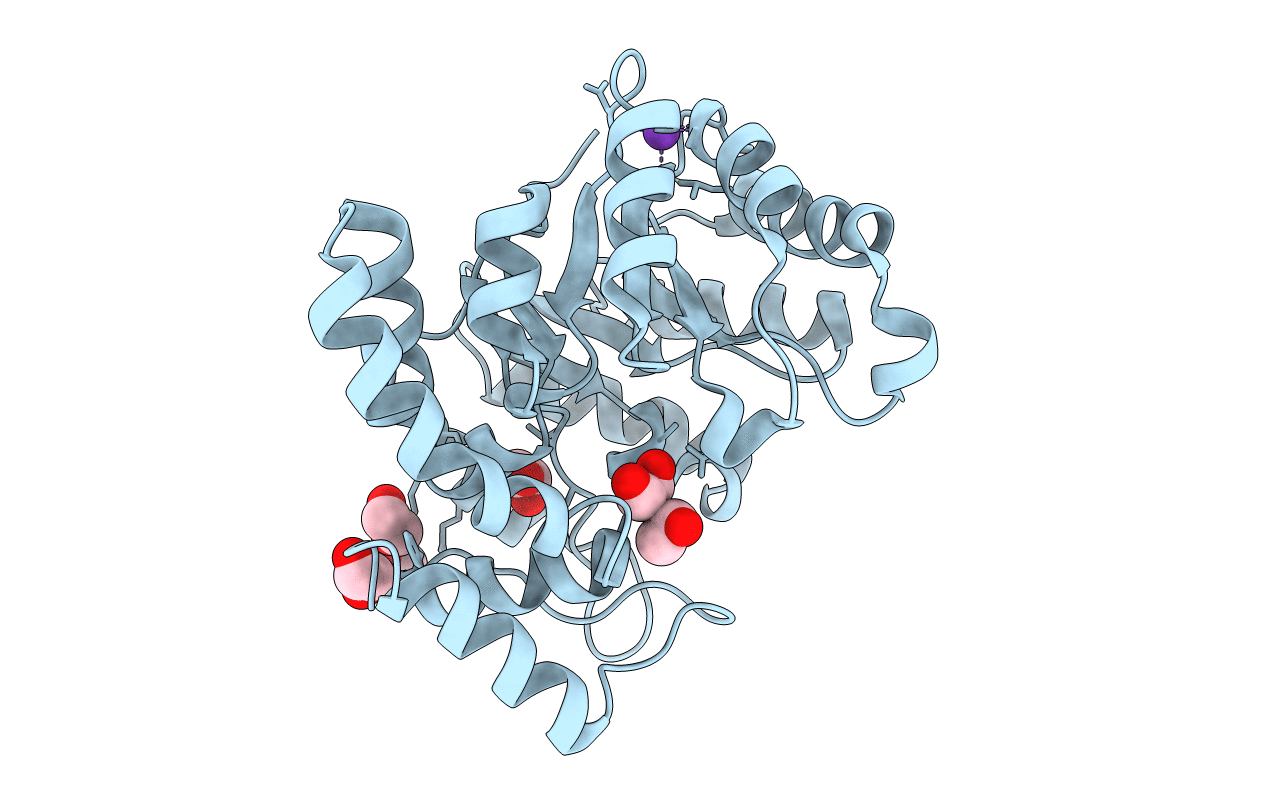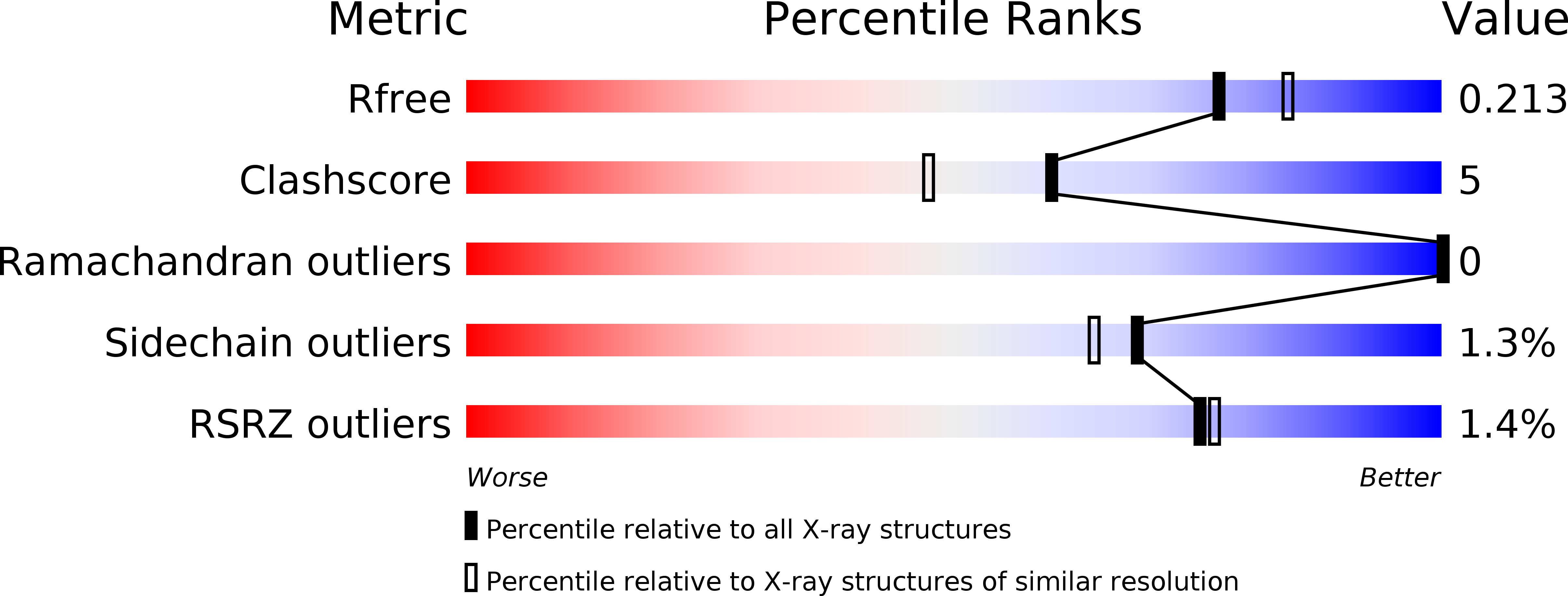
Deposition Date
2011-05-23
Release Date
2011-10-26
Last Version Date
2025-03-26
Entry Detail
PDB ID:
3S5O
Keywords:
Title:
Crystal Structure of Human 4-hydroxy-2-oxoglutarate Aldolase Bound to Pyruvate
Biological Source:
Source Organism:
Homo sapiens (Taxon ID: 9606)
Host Organism:
Method Details:
Experimental Method:
Resolution:
1.97 Å
R-Value Free:
0.21
R-Value Work:
0.19
R-Value Observed:
0.19
Space Group:
P 64 2 2


